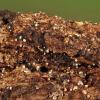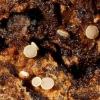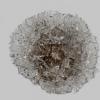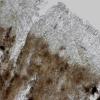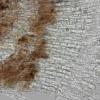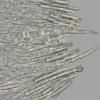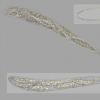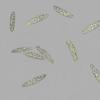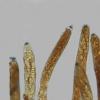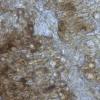
21-12-2025 09:32
Hello.A tiny ascomycete found embedded in wood in

21-12-2025 21:32
Pol DebaenstHello, Garden, Burgweg 19, Veurne, BelgiumOn 10/1

22-12-2025 23:38
Patrice TANCHAUDBonsoir, récolte sur un mur en pierre, apothéci

22-12-2025 00:47
Patrice TANCHAUDBonsoir, récolte à proximité du milieu dunaire

21-12-2025 21:40
Isabelle CharissouBonjour, j'aimerais connaitre les références de

20-12-2025 23:08
Patrice TANCHAUDBonsoir, récolte sur sol sablonneux dans l'arri�
Tatraea cf
Petra Eimann,
02-10-2023 13:29
Found on 31.08.2023 on a hardwood branch lying on the ground. Our first guess was Tatraea dumbirensis. We have not found spores like this in any other genus, but not all microfeatures match. Hook+ IKI+ spores 18.5-24 x 4.5-6 µm. Does anyone have an idea to which genus/species this fungus belongs. We are grateful for any information.
many thanks in advance
Petra
Hans-Otto Baral,
02-10-2023 17:19

Re : Tatraea cf
Indeed this is not T. dumbirensis. I use the name Phaeohelotium lilacinum for it, but it is actually a Tatraea. The taxonomic work on this genus is pending, Luis recently received the type of Pezicula lilacina, the original name, but his results I did not yet see. The spores are often a bit shorter or wider than in your specimen, but this might be variation.
Petra Eimann,
02-10-2023 18:16
Re : Tatraea cf
Thank you for your assessment. In the micrographs of the collections and pictures of Phaeohelotium liacinum that we have found on the net, no vacuole bodies can be seen in the paraphyses as we found them in our find (picture 6-9). Are they present in the specimens known to you? Then the following question arises: in PilzeDE Phaeohelotium lilacinum is listed as a synonym for Tatraea macrospora. Can we put the finding there under Tatraea macrospora?
Hans-Otto Baral,
02-10-2023 20:37

Re : Tatraea cf
You are right, what I have in my lilacina folder has slightly to medium strongly refractive, +/- multiguttulate VBs, yours are strong and elongated. In dumbirensis the refraction is similar or less. T. macrospora is an American species with even longer spores, and the VBs are likewise low-refractive. Synonymy with lilacina I don't believe, although the differences are not high.
Where is your specimen from? As I said, the genus is poorly known and needs a thorough revision including sequences. the data that we so far have are promising but still not enough. You can look at my folders on my homepage. www.in-vivo-veritas, go to main folder 5a Helotiaceae.
Petra Eimann,
02-10-2023 22:10
Re : Tatraea cf
Danke für deinen Hinweis. Wir haben uns den Ordner angesehen und es sind schon Übereinstimmungen vorhanden. Wir werden den Fund dann bei PilzeDE als Pseudohelotium lilacinum melden. Der Fund stammt aus Deutschland / NRW / MTB 4705,3 / 52m aus einem nominellen Flattergras-Buchenwald der allerdings im Unterwuchs fast vollständig von Brombeer-Sträuchern bedeckt ist. Es handelt sich um ein ca. 300qm großes Fragment einer ehemals ausgedehnten Bruchlandschaft. Wir haben noch das Exsikkat und es müssten vor Ort noch frische Exemplare zu finden sein. Wenn du magst können wir gern etwas zusenden.
Hans-Otto Baral,
03-10-2023 09:14

Re : Tatraea cf
Danke fürs Angebot, aber für detaillierte Studien habe ich leider keine Zeit mehr. Das beste wäre, eine Sequenz zu gewinnen. Hat die DGfM da nicht Interesse? Ich weiß leider nicht, wann Luis Quijada das Thema wiederaufnehmen will. Er war mehrere Jahre an der Cornell Uni und ist jetzt wieder zuhause auf Teneriffa an der dortigen Uni. Vermutlich hat er erst mal viel Bürokratie am Hals, er meldet sich zur Zeit nicht. Wenn ich einmal höre, dass er den Typus angeschaut hat, dann können wir auf dein Angebot zurückgreifen. Die Originalbeschreibung von Bresadola (hast du vielleicht in meinem Ordner gesehen) hat schon sehr kurze Sporen, 14-16 x 7-8, das ist wohl doch nicht alles dasselbe. Aber da wir einige Sequenzen haben, könnte dein Fund Entscheidendes beitragen.
Petra Eimann,
03-10-2023 17:40
Re : Tatraea cf
Wir haben uns bzgl. DNA Sequenz mit der DGfM in Verbindung gesetzt. Wir melden uns, wenn etwas substanzielles dabei heraus gekommen ist. Des weiteren liegt das Exsikkat bei uns und du kannst dich bei Bedarf melden und darauf zurückgreifen.
